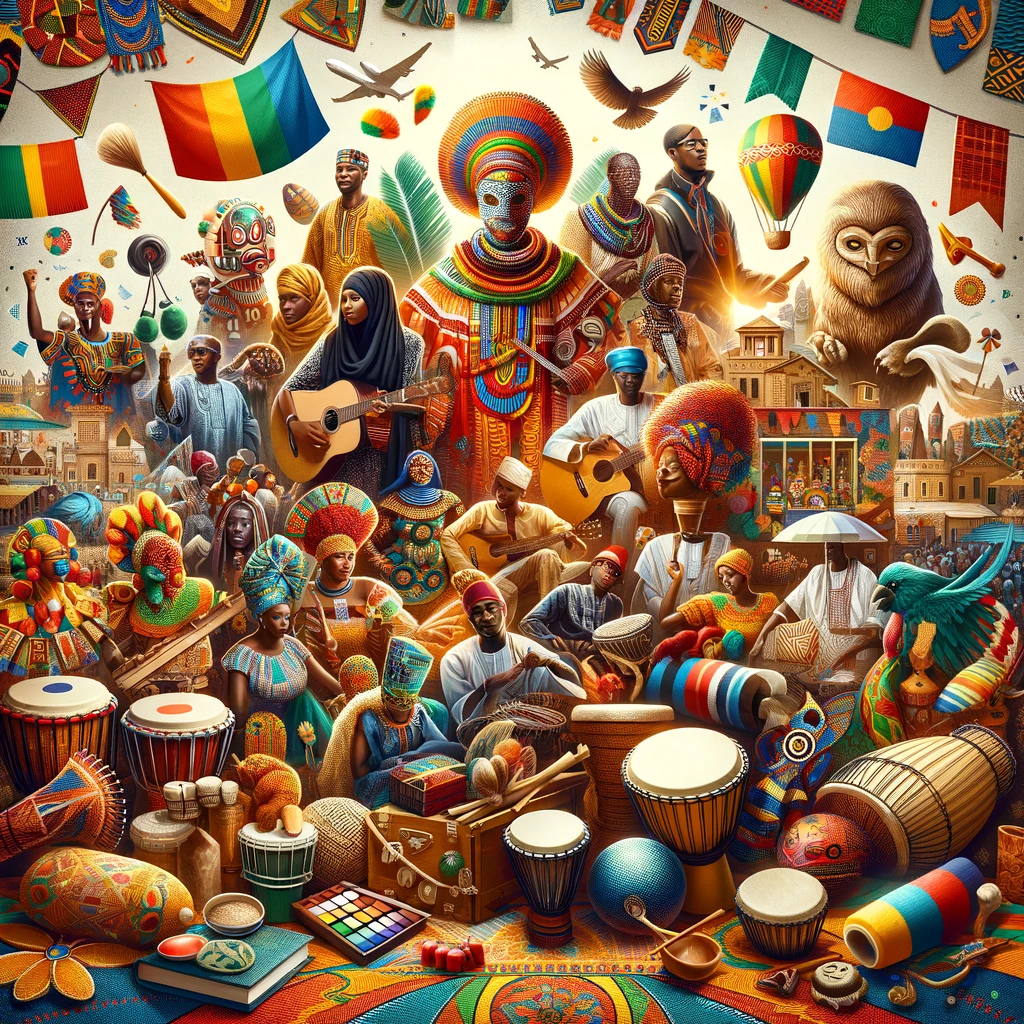At a Glance
- African cultural practices reshape modern art, driving global interest in authentic, heritage-based expression.
- Mask-making, textile design, and beadwork fuel museum exhibitions and sustainable fashion innovation.
- Storytelling, body art, and dance influence immersive, narrative-driven contemporary installations worldwide.
As the global art market shifts toward inclusivity and authentic narratives, African cultural heritage is emerging as a powerhouse shaping the future of contemporary art.
From Lagos to Johannesburg, artists are seamlessly integrating traditional African rituals, symbols, and craftsmanship into modern art, captivating collectors, museums, and galleries worldwide.
Once marginalized as “folk art,” these indigenous practices now form the backbone of discussions on cultural identity, post-colonial expression, and visual innovation—fueling a vibrant renaissance in African contemporary art.
Here are 7 African cultural practices actively shaping modern art, fueling a renaissance that is both rooted and radical.
Mask-Making Traditions: Symbolism meets contemporary sculpture
Traditional African masks, rooted in Yoruba, Baule, and Dogon spiritual rites, are shaping the modern sculpture landscape.
Artists now reinterpret these symbolic forms using contemporary materials like resin and digital fabrication, turning ancient geometry into avant-garde statements.
These masks, long tied to ritual and ancestry, are now centerpieces in global art auctions and exhibitions.
Textile Weaving and Dyeing: Vibrant patterns in contemporary design
From Mali’s iconic bogolanfini mud cloth to Ghana’s vibrant kente textiles, African weaving and dyeing techniques inspire contemporary fashion, graphic art, and installation pieces.
These textiles, rich with cultural symbolism, are fueling sustainable fashion trends and elevating handcrafted fabrics on global platforms—merging heritage with eco-conscious innovation.
Oral Storytelling and Performance: Narrative Art in visual forms
The continent’s rich oral traditions, embodied by griots and praise singers, deeply influence visual artists who embed storytelling through symbolic imagery, calligraphy, and interactive art installations.
This narrative-driven art invites audiences into a dialogue bridging history and modernity, enhancing engagement and cultural connection.
Beadwork: Micro artistry with macro impact
Beadwork, central to communities such as the Maasai and Yoruba, conveys social status and spirituality through detailed patterns and colors.
Today, artists scale up this micro artistry, applying beads in sculpture, jewelry, and multimedia art—creating powerful symbols of cultural resilience and identity.
Body Painting and Scarification: Art in flesh and identity
Traditional body painting and scarification rituals—marking rites of passage—are reimagined through tattoo art, photography, and performance.
These contemporary adaptations challenge global perceptions of beauty and heritage, positioning African body art as a bold statement in the modern art scene.
Pottery and Ceramics: Functional forms as artistic expression
African pottery techniques, known for their regional diversity and craftsmanship, inspire ceramic artists blending tradition with modern design.
These works straddle utility and gallery-worthy art, boosting Africa’s profile in international craft and fine art markets.
Dance and Music: Movement inspiring visual rhythms
The dynamic rhythms of African dance and music resonate in visual art through kinetic sculptures, vibrant brushwork, and immersive installations.
Collaborative projects across art, music, and dance celebrate Africa’s cultural vitality, drawing global attention to the continent’s creative innovation.















